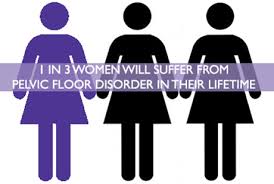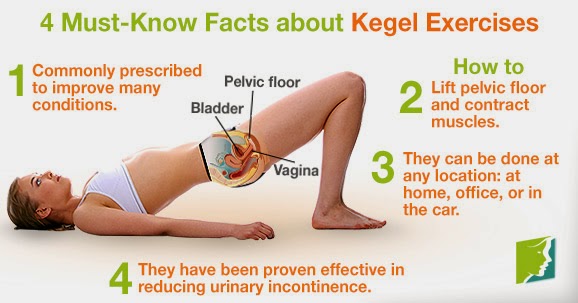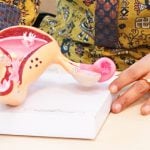Women today inhabit multiple and varied roles, ranging from office executives to serving as the glue that binds families together to designated caregivers for their friends, colleagues, children, partners and parents. Having dedicated their lives to the emotional and physical well-being of others, too often many women overlook themselves. Fortunately, there are dedicated and specialised physicians in a field focused on the prioritisation of women’s health. This field is gynaecology. The word gynaecology is derived from ancient Greek, with ‘gyne’ meaning woman and logia meaning ‘study’, making gynaecology the study of women. This does not mean that gynaecologists merely examine women with magnifying glasses and take observational notes. These committed physicians work hard both in research and practice to keep women healthy in mind and body. Let’s look at the similarities and differences of these two areas and just how vast and dynamic these fields are. General gynaecology is dedicated to the well-being of women from adolescence all the way into their golden years. Because women undergo so many changes throughout their lifetime, the issues gynaecologists must tackle are very much related to the age of a woman. In adulthood, or the reproductive age, most women visit gynaecologists regarding menstrual issues and issues related to fertility or early conception; with around 70% of the complaints being about menstruation. For adolescents, menstruation is one of the main issues but not the only one. Girls or young women may sometimes need a gynaecologist to help them to better understand their sexuality or deal with gender identity. This problem is especially prominent amongst girls with chromosomal issues that are not detected during childhood. The signs of these kind of conditions become more apparent when the girls reach puberty. For example, the girl may be unable to menstruate, and it is the task of the gynaecologist to offer appropriate help.
Besides these concerns, gynaecologists are equipped to help women in more general aspects of health including advice concerning safe sex, screenings, sexually transmitted diseases and preventive medicine. Gynaecologists also take a holistic approach to women’s wellness by monitoring women’s well-being in terms of their metabolic issues, hypertension, diabetes along with other illnesses.
For women approaching their golden years, coping with menopause and problems that may come with it, is of primary concern as it is the most significant uncontrolled shifts in their biology. Gynaecologists assist by looking after their well-being and monitoring the hormonal shifts that take place while guiding women to find treatment plans that best suit them. As the longevity of women’s life increases, the aging process somehow creates unavoidable nuisance like ‘osteoporosis’ where bones can easily break after even a light fall, sagging of the uterus and vaginal wall causing what people know as prolapse with possibly urinary incontinence and many others. This brings us to the topic of Urogynaecology. Urogynaecologists are specially trained to look after women with problems concerning urination or the pelvic floor. Pelvic Floor Disorder or PFD is often caused by a weakness or scarcity in the muscles supporting the pelvic floor, causing the pelvic organs to prolapse into and sometimes out of the vagina. It is commonly associated with other complains especially the inability to hold urine thus leakage. More information on vaginal pessary for pelvic organ prolapse In the same way that specialists in fertility are probably updated with the most modern fertility treatments and procedures because they have more exposure and experience with infertile patients, Urogynaecologists have a greater exposure to pelvic floor disorders, though regular gynaecologists can also recommend treatments. But when it comes to surgical intervention and more complex cases, Urogynaecologists are still the best equipped.  So what exactly is Pelvic Floor Disorder? It is a surprisingly common condition, affecting up to one in five women. It is associated with some life events like difficult child birth, consistent high pressure from maybe chronic coughing, straining during passing motions, heavy lifting work and so forth, causing damage to the pelvic floor muscles supporting the pelvic organs and vagina in its place. Women may complain with non-specific symptoms like back pain or discomfort but more importantly some will suffer from emotional and psychological disturbance, sexual problem, vaginal bleeding and sometimes inability to control urination or even bowel opening. Coughing, laughing or sneezing can lead to unwanted leakage which is called ‘stress incontinence’. Other problems that arise from damage to the nervous system that controls the bladder and bowels that are situated close to the pelvic floor are ‘Emptying Disorders’ (difficulty urinating or moving bowels) and ‘Overactive Bladder’ (frequent need to void, bladder pressure, urgency, urge incontinence or difficulty holding back urine when having the urge to urinate). These problems have been shown to be closely related to diabetes mellitus and some neurological illness.The condition varies from woman to woman, and some may not need surgical intervention. Simple pelvic floor exercises, such as the Kegel Excercise, can suffice for most women with mild stress incontinence. The exercises are especially effective as a form of prevention but identifying the correct muscles to exercise is important. These are the same muscles you would use to hold back gas or to stop the flow of urine midstream. Your doctor or nurse can help make sure that you are contracting the right muscles. Once you have correctly identified the muscles, you contract and hold the squeeze for a few seconds and then completely relax the muscles before the next squeeze. Expect that it will take about 6 to 8 weeks of exercising before you notice that you have fewer leaks and more bladder control.
So what exactly is Pelvic Floor Disorder? It is a surprisingly common condition, affecting up to one in five women. It is associated with some life events like difficult child birth, consistent high pressure from maybe chronic coughing, straining during passing motions, heavy lifting work and so forth, causing damage to the pelvic floor muscles supporting the pelvic organs and vagina in its place. Women may complain with non-specific symptoms like back pain or discomfort but more importantly some will suffer from emotional and psychological disturbance, sexual problem, vaginal bleeding and sometimes inability to control urination or even bowel opening. Coughing, laughing or sneezing can lead to unwanted leakage which is called ‘stress incontinence’. Other problems that arise from damage to the nervous system that controls the bladder and bowels that are situated close to the pelvic floor are ‘Emptying Disorders’ (difficulty urinating or moving bowels) and ‘Overactive Bladder’ (frequent need to void, bladder pressure, urgency, urge incontinence or difficulty holding back urine when having the urge to urinate). These problems have been shown to be closely related to diabetes mellitus and some neurological illness.The condition varies from woman to woman, and some may not need surgical intervention. Simple pelvic floor exercises, such as the Kegel Excercise, can suffice for most women with mild stress incontinence. The exercises are especially effective as a form of prevention but identifying the correct muscles to exercise is important. These are the same muscles you would use to hold back gas or to stop the flow of urine midstream. Your doctor or nurse can help make sure that you are contracting the right muscles. Once you have correctly identified the muscles, you contract and hold the squeeze for a few seconds and then completely relax the muscles before the next squeeze. Expect that it will take about 6 to 8 weeks of exercising before you notice that you have fewer leaks and more bladder control. 
Reference: http://www.potentash.com/wp-content/uploads/2015/08/4-must-know-facts-about-kegel-exercises.jpg
But if exercises don’t work, and the stress incontinence is especially severe and the pelvic muscles is particularly weak, Urogynaecologists can step in to provide the necessary intervention including surgery. Tension free Transobturator tape, a form of mesh, can be inserted via surgery to provide additional strength, akin to muscle fibres. For women who are not fit for surgery or not keen to undergo one, options like insertion of vaginal pessary to support the weak muscles or injection of biomaterials into the urethra to strengthen the sphincter function could be offered. Women’s health is complex, with many different aspects at play, but to gynaecologists it is an incredibly important and worthwhile field. The wellbeing of women is crucial to everyone, as they are not only pillars of the home but integral forces in the workplace. Gynaecologists help women feel at ease with their bodies, and encourage women to take a more active role in their own health. Sometimes staying healthy seems a daunting task, what with so many threats. Whether it is reproductive cancer, sexually transmitted disease, pelvic floor disorders or simply menstrual issues, gynaecologists are dedicated to assisting women overcome their physiological hurdles. This article is brought to you by IMU Healthcare.









